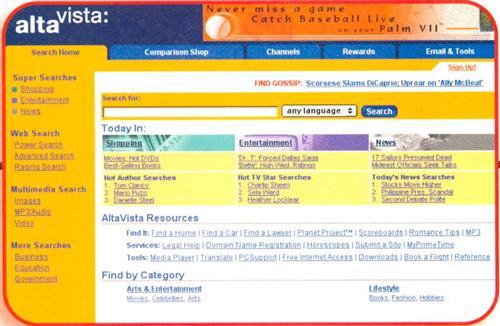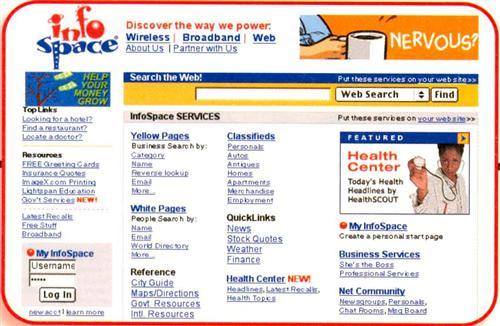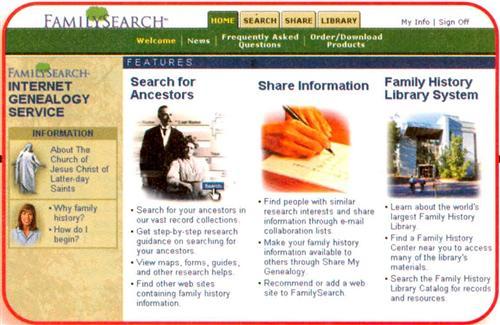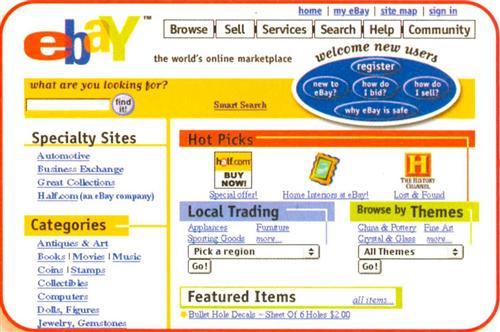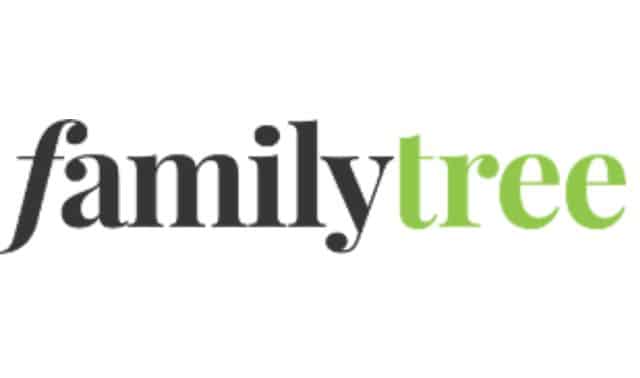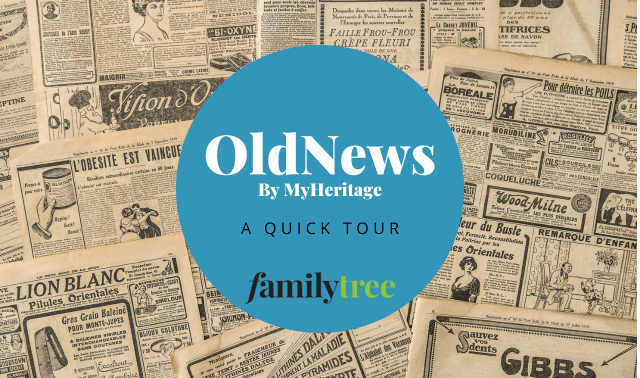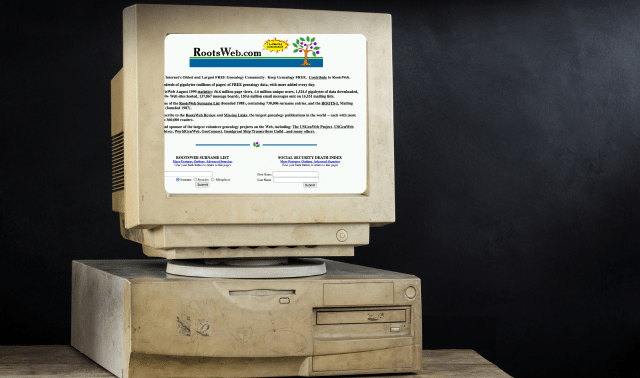Searching the Internet for your family history can bring to mind that line about water, water everywhere but not a drop to drink: You find yourself swimming in data, but unable to quench your thirst for clues. Do your Internet searches produce either no matches at all or a million and one sites that don’t answer your question? The missing links in your family tree could be hiding somewhere in the billions of pages of the World Wide Web. But finding what you need in the ocean of Internet info requires a methodical approach. Here we offer 10 Internet search strategies, both general and specific, to put your online genealogical research on the right track to results:
1. TRY SEVERAL INTERNET SEARCH SITES.
Search directories, prepared by human editors, list Web sites by category along with brief descriptions. For example, Cyndi’s List of Genealogy Sites on the Internet <www.cyndislist.com> lists more than 82,000 Web sites, including about 70,000 sites arranged by category. This is an excellent place to start if you want to find genealogy sites pertaining to a particular surname, state, province, country, ethnic group or record type. A popular directory for the Web at large is Yahoo! <www.yahoo.com>.
Search engines index every word on every Web page they find, using computerized “spiders” to “crawl” the Web. If you’re looking for the name of a particular person or place, use a search engine. While the larger Internet search engines index hundreds of millions of Web pages, none covers all of the Web. So you’ll increase your chances of success if you try more than one search engine. Go to Family Tree Magazine‘s Family History SuperSearch<www.familytreemagazine.com/search/general.asp> to comb the contents of nine search engines at once.
AltaVista, FastSearch, Google and Northern Light index a large number of Web pages and are four of the best search engines for genealogists. Each offers sophisticated searching capabilities and some unique features:
? AltaVista <www.altavista.com> offers many search tools and can translate text or Web pages between English and six other languages.
? FastSearch <www.alltheweb.com> can automatically filter and display search results from 31 languages.
? Google <www.google.com> indexes more than a billion Web pages. It keeps a copy of indexed pages in its cache, so even if the page is removed from the Web, Google can still display it for you. The Google site is also noteworthy for how it ranks search results: by how often pages are linked to by other sites, thus adding a human evaluation component to automated search “spiders.”
? Northern Light <www.northernlight.com> searches not only Web sites, but also its own Special Collection, a large body of material from more than 6,900 journals, books, magazines, databases and news wires, most of which is unavailable elsewhere on the Internet. (Some of these require a fee to read what you’ve found.)
2. USE A SEARCH ENGINE’S ADVANCED SEARCH OPTIONS.
Take the time to read the instructions for each Internet search engine and try using the advanced search options. Most search engines let you use “Boolean operators” such as and, or and and not, or quotation marks to enclose an exact phrase you want to search for. Usually you can precede a word with a plus sign (+) to indicate that the word must appear or with a minus sign (-) to indicate that the word must not appear. Some search engines offer an advanced search option where you simply fill in the blanks to build your search query.
If you’re researching a rare name, like my family names Keherise and Shaubhut, you probably won’t get too many matches, so try searching on the name alone. But if you’re researching a common last name or one that’s spelled the same as a widely used word in English (like the last names Green, Slip and Snow in my family), try narrowing down the list of matches by adding another search term such as:
? A first name: Search on “Leonard Slip” or “Slip, Leonard” to find only occurrences of those two words together.
? Another last name: Search on Slip and (Ryson or Ryerson) to find Web pages with the word Slip and either Ryson or Ryerson. (Leonard Slip’s wife was Elizabeth Ryson, sometimes spelled Ryerson.)
? A place name: Search on Adams and Moultonborough to find sites that mention the Adams family of the town of Moultonborough, NH.
? The word family or genealogy: Search on +Main +genealogy or on “Main family” to find histories of the family named Main. In the first case, both the words Main and genealogy must appear on the site to produce a match. In the second case, the words within quotes must appear together in that order.
Keep in mind that Internet search engines don’t index all the genealogy data available on the Web. For example, library catalogs and the databases on FamilySearch <www.familysearch.org>, Roots Web <www.rootsweb.com>, Ancestry.com <Ancestry.com > and Genealogy.com <www.genealogy.com> generally aren’t indexed by third-party search engines such as AltaVista, FastSearch, Google and Northern Light (see strategy 1). You have to go to these Web sites one by one and use their own search forms.
3. SAVE TIME WITH GENEALOGY MAILING LISTS BY SEARCHING ARCHIVES.
Mailing lists devoted to just about every topic imaginable let you carry out a discussion by e-mail with people around the world. When you post (send) an e-mail message to a mailing list, a copy of that message is sent to everyone who subscribes to the list. So mailing lists are an efficient way to get research advice and publicize your research interests.
There are mailing lists for surnames and ethnic groups, as well as for specific counties, states and countries and many other genealogy-related topics. Go to <www.rootsweb.com/~jfuller/gen_use.html> or click on the “Share” tab on the FamilySearch home page for lists of thousands of genealogy mailing lists (if you haven’t already, you’ll have to register to access the FamilySearch lists). And browse through more than 19,000 genealogy lists sponsored by RootsWeb <lists.rootsweb.com>.
While you may find lots of useful information in mailing lists, scanning through all the messages posted to just one list in a single day can be terribly time-consuming. And the information you need could have been posted to the list before you first joined it or to a list that you don’t read at all.
Fortunately, the messages posted to most lists are stored in searchable “archives.” At Deja.com <www.deja.com/usenet> you can search the archives of thousands of mailing lists and the many “Usenet newsgroups” of the Web, all at once.
Most mailing lists also have their own Web sites where you can search each list’s message archives. When you first subscribe to a mailing list, you usually receive a set of guidelines for using the list, including instructions for searching the archives. You might search for a place name in the archives of a surname list (e.g., search for Mainein the Pennington list) or search for a surname in the archives of a locality list (e.g., search for the name Pennington in the Aroostook County, Maine, list). Repeat the search every few months to cover the latest messages — and don’t worry if you lack the time to read through the mountain of messages sent to the mailing list every day!
Here’s where to search the archives of some popular genealogy mailing lists, by topic:
? African-American: AFRIGENEAS <www.afrigeneas.com/mail-list.html>
?France & French-speaking areas: GEN-FR-L. Go to <lists.rootsweb.com>, first France and then GEN-FR.
? German-American: GERMAN-AMERICAN-L. Go to <lists.rootsweb.com>, under “Other” select Ethnic and then GERMAN-AMERICAN.
? Germany: GEN-DE-L. Go to <lists.rootsweb.com>, select Germany and then GEN-DE.
? Great Britain: GENBRIT-L. Go to <lists.rootsweb.com>, select England and then GENBRIT.
? Ireland: GENIRE-L. Go to <lists.rootsweb.com>, select Ireland and then GENIRE.
? Italy: GEN-ITALIAN-L. Go to <lists.rootsweb.com>, select Italy and then GEN-ITALIAN.
? Poland: POLAND-ROOTS-L. Go to <lists.rootsweb.com>, select Poland and then POLAND-ROOTS.
? United States and other countries: ROOTS-L <searches.rootsweb.com/roots-l.html>
4. USE ONLINE PHONE DIRECTORIES TO FIND CHURCHES, CEMETERIES AND FUNERAL HOMES, AND TO LOCATE ANCESTRAL HOMETOWNS.
Online directories are especially useful for locating the addresses, phone numbers and e-mail addresses of relatives and other researchers. Teldir.com <www.teldir.com/eng> has more than 400 links to yellow pages, white pages, business directories, e-mail addresses and fax listings from more than 170 countries all around the world.
Directories on the Web can also help you identify churches, cemeteries and funeral homes that might have records of your family. For example, if you’re looking for churches in Houlton, Maine, you might go to InfoSpace <www.infospace.com>, click on the Yellow Pages tab, type in churches under Category and Houlton under City and select ME, the postal abbreviation for Maine, for State. Click on Find and you’ll get a list of matching categories. Select Churches — By Brand/Specialty and then choose from the list of 12 religious denominations. If you select Baptist, you’ll get a list of three Baptist churches in and around Houlton, along with their mailing addresses and phone numbers. In many cases, you can then click on About and then on Map to get a map pinpointing the exact location of the church so you can determine which one was closest to your ancestor’s home.
If your immigrant ancestors had an uncommon last name, online phone directories can also help you identify your ancestors’ hometowns. For example, my ancestor Tobias Schaubhut came from Germany to Pennsylvania as an indentured servant in 1786. I went to Teldir.com and selected Germany from the list of countries. Then I clicked on the link to TeleAusKunft Online where I chose to display the page in English. From there I selected Telephone Book, entered Schaubhut under Name and clicked on Start Search. Among the 75 matches were many residents of Tobias Schaubhut’s hometown of Schopfheim in Baden.
Here are online directories of people and businesses worth a try:
? 555-1212 <www.555-1212.com>
? AnyWho <www.anywho.com>
? Infospace <www.infospace.com>
? WhitePages <www.whitepages.com>
? WhoWhere? <www.whowhere.lycos.com>
? WorldPages <www.worldpages.com>
? Yahoo! People Search <people.yahoo.com>
? YellowPages <www.yellowpages.com>
5. FOCUS ON PLACES, NOT JUST PEOPLE.
Expand your research focus to cover not just family names, but also the places where your ancestors lived. Here are a few ways the Internet can help you find local records:
? Both USGen Web <www.usgenweb.org> and WorldGenWeb <worldgenweb.org> contain a huge volume of indexes and transcribed records.
? Subscribe to mailing lists not only for surnames, but also for the counties, states, provinces and countries where your family lived. Post messages briefly outlining the names, dates and places you’re researching and someone on the list may very well be able to direct you to the best information sources for that place and time period.
? Check not only the Surname section of the Family History Library Catalog (go to <www.familysearch.org> and click on the Search tab, then Family History Library Catalog) but the Place section, too. Likewise, when checking other library catalogs, search on the towns, counties and states where your ancestors lived. Go to <www.familytreemagazine.com/articles/librarylinks.html> for links to many library catalogs.
? Keep in mind that many important records such as wills and deeds are usually kept at the county level in both the United States and Canada. Use historical maps to track changes in county names and boundaries. Many county pages on USGenWeb have such maps.
By learning about the history of the area where your ancestors lived and identifying the records available for that particular place and time, you’ll greatly improve your chances of solving the mysteries in your family history.
6. USE THE INTERNET AS A GUIDE TO OFFLINE SOURCES.
Online genealogical resources have grown immensely in a very short period of time. Nevertheless, most family history information is still available only in books and manuscripts at libraries and archives. If you don’t find what you’re looking for on the Web, you can still use it to locate data in offline sources.
For example, FamilySearch <www.familysearch.org>, the huge genealogy site sponsored by the Church of Jesus Christ of Latter-day Saints, contains a wealth of material to help you with your research both on and off the Internet. Select the Search tab to explore these three important resources:
?Research Guidance: Each state, province, region and country in the list has an interactive guide to help you identify the best records to check for the information you seek.
? Research Helps: Research outlines for US states, Canadian provinces and many countries provide clear, concise summaries of the major record groups you should consult. Historical maps and historical outlines help you determine where records were kept for a particular place and time period.
? The Family History Library Catalog: This catalog describes more than 2 million rolls of microfilm and hundreds of thousands of books and maps at the Family History Library in Salt Lake City. Most of the microfilms can be borrowed through LDS Family History Centers around the world.
7. USE INTERNET SURNAME LISTS AS A TOOL FOR NETWORKING WITH OTHER GENEALOGISTS.
Surname lists let you register the family names, places and time periods you’re researching and locate others with similar research interests. RootsWeb and GENUKI have two of the largest surname lists:
? The RootsWeb Surname List <www.rootsweb.com> has more than 895,000 entries. You can easily submit your own surnames just by filling in a form right on the Web site. Searching for genealogists interested in the name Hall in New York state, for example, I got five pages listing dozens of researchers. Since I’m interested in the Hall family of Cayuga County, NY, I used my Web browser’s “Find” function to search for Cayuga on each page and found several matches.
? GENUKI <www.genuki.org.uk>, the extensive Web site for genealogy in the United Kingdom and Ireland, has links to separate surname lists for counties throughout the British Isles. Go to the GENUKI home page and click on GENUKI Contents and then on Index of Surname Lists. Finally, select your county of interest. For example, I selected Derbyshire, England, searched on the name Hall in Belper and immediately got the name and address of someone in Oregon researching the Hall family of that town.
Both USGenWeb <www.usgenweb.org> and WorldGenWeb <worldgenweb.org> have many other surname registries.
8. SELECT AN INDIVIDUAL DATABASE WITHIN FAMILYSEARCH TO DO A MORE PRECISE SEARCH.
When you select the Search tab and Search for Ancestors on the FamilySearch Web site at <www.familysearch.org>, you may search “All Resources at once. Since this option covers more than 650 million names in three large databases, as well as thousands of Web sites, it’s very efficient. But if you search the Ancestral File, International Genealogical Index (IGI), Pedigree Resource File or Web Sites individually, you can take advantage of search options unique to each database.
For example, if you’re researching families in the British Isles, Ancestor Search lets you narrow a search only down to a country (England, Scotland, Ireland or Wales), while searching just the IGI lets you limit matches to a specific county. That’s especially helpful if you’re researching a common last name.
I wanted to find children of Charles Hall and his wife Sarah and expected they were baptized in Derbyshire, England, before about 1820 when the family came to New York. So, under Search for Ancestors, I selected the International Genealogical Index and did a parent search by filling in Charles Hall as the father and Sarah as the mother. After selecting British Isles as the region, England as the country and Derby as the county, I clicked on Search. The first five of the 25 matches were all children of my Charles and Sarah Hall and baptized (christened) in the town of Belper. The names of all but one of them were new to me.
Once you find a relative in the IGI, you can also search on a batch number to find other potential family members. Individuals submitted to the IGI in the same batch are often related. Christening (baptismal) entries for several of the children of Charles and Sarah Hall have the batch number 7131520. So, searching the IGI, I filled in the batch number, selected British Isles as the region and searched on the last name Hall. The 54 matching Halls, christened in Belper between 1783 and 1809, may very well be related to my Charles Hall.
Next, I’ll check the actual church records for Belper to verify the information in the IGI. Select the Search tab and then Family History Library Catalog, which lists all of the books and microfilms at the Family History Library. I searched on a place name, Belper, and found that the church records of Belper have been microfilmed and can be ordered through an LDS Family History Center (to find the center nearest you, select the Library tab and then Family History Centers). I’ll be on the lookout for christenings and marriages found in the IGI and will check carefully to see if the church records back them up. In some cases, the church records may give more information than the IGI. For example, a record of baptism may provide the occupation or specific place of residence of the child’s father. Very few burials are listed in the IGI, so I’ll also be sure to look for them in the church records.
9 USE THE ANCESTRY WORLD TREE OR ROOTSWEB WORLDCONNECT PROJECT TO FIND YOUR FEMALE ANCESTOR’S MAIDEN NAME.
Finding female ancestors’ maiden names is one of the most difficult challenges facing most genealogists. Once you discover a woman’s surname before she was married, however, you’re on the road to exploring a whole new branch of your family tree.
While you need both a first and last name to search most databases, just a first name is enough to find a match in the Ancestry World Tree, a pedigree database with more than 72 million names. Go to Ancestry.com <Ancestry.com > and click on Ancestry World Tree. Enter a first (“given”) name and leave the surname (last name) blank. Under Advanced Options, enter the year of birth if you know it or make an educated guess. If you get too many matches, narrow down the list by adding a place of birth.
The maiden name of my ancestor Thankful, wife of Stephen Brown, had eluded me for some time. She’s buried next to her husband in the town of Maryland, NY, and her gravestone says she died on May 6, 1837, at age 72. So she was born in about 1764 or 1765. I searched the Ancestry World Tree for a Thankful born in 1764 and found several matches, including four trees with information on Thankful Maine, born Aug. 12, 1764, in Stonington, Conn., a daughter of Amos Maine and Abigail Brown. My Thankful had married a native of Stonington and a little more research confirmed that she was, indeed, born Thankful Maine. Eureka!
You can do a similar search to find a woman’s maiden name in the WorldConnect Project <worldconnect.rootsweb.com>, a pedigree database with more than 45 million names. Click on either Search All Databases or Go and enter a first name and any other information you have on that individual.
10. USE THE INTERNET TO FIND RARE GENEALOGY BOOKS AND TO BUY USED GENEALOGY CDS AT BARGAIN PRICES.
A number of large used book dealers have Web sites where you can search for a specific title. Among them are Advanced Book Exchange <www.abebooks.com>, Alibris <www.alibris.com> and Bibliofind <www.bibliofind.com>. Try BookFinder.com <www.bookfinder.com> to search more than 20 million new, used, rare and out-of-print books at several large book dealers at once.
Ebay <www.ebay.com>, the immensely popular online auction site, lists just about everything you can imagine, including many items of special interest to genealogists. There’s even a special category just for genealogy: Click on Browse and then, under Everything Else, select Genealogy. Among the 1,215 items listed there when I last checked were family group sheet collections, published family genealogies, local histories and many genealogical reference books and CD-ROMs. Searching all categories for the word genealogy brought up 1,858 items, most selling for well below the original purchase prices.
Browse through the genealogy listings on eBay or search the Genealogy category for a last name or place name. For example, I searched on Pennsylvania and got seven matches, including a book on Revolutionary War soldiers, a CD-ROM with genealogies of Pittsburgh families and a three-volume index to deaths in Luzerne County, Pa. When I clicked the box to Search titles and descriptions, the number of matches increased to 62.
You might try searching all of eBay, not just the genealogy category. Many local history books and memorabilia useful to family historians are listed in other categories. For example, select Collectibles, Paper and then Documents to see hundreds of old records up for bid, including original deeds, marriage certificates and records from the Revolutionary War and Civil War. Given the reasonable selling prices for most of these items, shopping at eBay could be a wonderful way to build a genealogy reference collection for yourself or for a public library or genealogical society.
From the February 2001 issue of Family Tree Magazine

